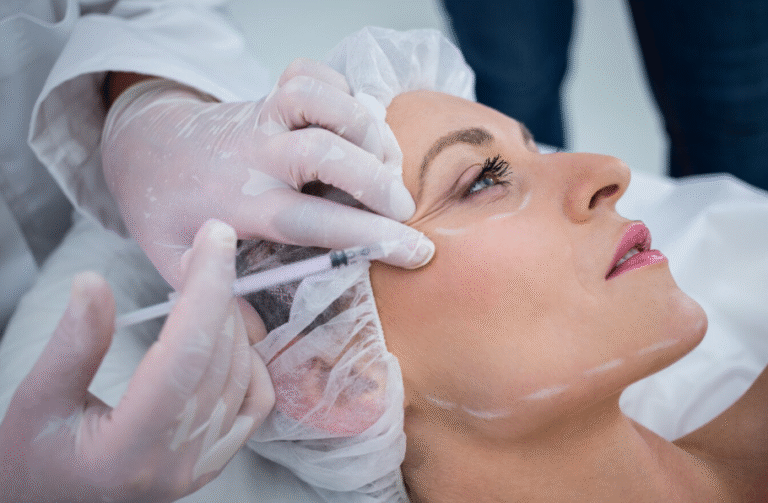Treatment Overview
The Gravity-Resistant Neck Lift is an advanced surgical technique designed to maintain a youthful, firm neck contour that resists the downward pull of gravity over time. Unlike traditional neck lifts, this procedure focuses on deeper tissue repositioning and structural support to ensure longer-lasting results. In Korea, plastic surgeons are highly skilled at combining aesthetic artistry with innovative lifting techniques, making this a popular choice for patients seeking durable neck rejuvenation.
Purpose & Benefits
This procedure is ideal for combating the effects of aging, sagging skin, and loss of muscle tone in the neck.
Key benefits include:
- Long-lasting resistance to sagging due to deeper muscle tightening
- Reduction of neck bands and excess skin
- Sharper and more defined jawline
- Smoother and firmer neck profile
- Natural, youthful results without an over-pulled appearance
Ideal Candidates
You may be a good candidate for a gravity-resistant neck lift if you:
- Have noticeable skin laxity and muscle banding in the neck
- Want results that last longer than traditional lifting techniques
- Are in good general health with no major medical concerns
- Have realistic expectations and understand the recovery process
- Are seeking a natural yet noticeable improvement
Possible Risks & Complications
While generally safe, potential risks include swelling, bruising, infection, numbness, asymmetry, visible scarring, or rare nerve injury. Choosing an experienced Korean surgeon significantly reduces these risks.
Surgical Techniques Used
Korean surgeons often use a deep-plane or extended-SMAS approach, which lifts and secures the deeper muscle and connective tissue layers (platysma and SMAS) to create structural support that resists gravitational pull. Incisions are typically made around the ears and sometimes under the chin, with meticulous closure to minimize scarring.
Recovery & Aftercare
Recovery time is generally 10–14 days, though some swelling may persist for several weeks.
Aftercare may include:
- Wearing a compression garment to support healing
- Keeping the head elevated when sleeping
- Avoiding strenuous activity for 3–4 weeks
- Following a scar care program to minimize marks
- Attending follow-up visits for progress monitoring
Results & Longevity
Initial improvements are visible right after surgery, but final results appear over 2–3 months as swelling subsides. With proper skincare and healthy habits, the effects of a gravity-resistant neck lift can last 12–15 years, longer than standard neck lifts.
Treatment Process in Korea
The process starts with a consultation and 3D imaging simulation to visualize results. On surgery day, patients undergo general anesthesia or deep sedation. The procedure usually lasts 3–4 hours, during which the surgeon repositions and tightens deeper structures for gravity-resistant support. Korean clinics often offer advanced recovery services such as high-frequency therapy, LED light treatment, and lymphatic massage to speed healing.
Cost Range
The cost for a gravity-resistant neck lift in Korea typically ranges from ₩11,000,000 to ₩17,000,000 KRW (approximately $8,300 – $12,900 USD), depending on the clinic, surgeon’s expertise, and procedure complexity.
| Service Component | Cost Range (KRW) | Approx. USD |
|---|---|---|
| Consultation & Imaging | ₩100,000 – ₩300,000 | $75 – $230 |
| Surgical Fee | ₩10,500,000 – ₩16,000,000 | $7,900 – $12,100 |
| Anesthesia & Facility Fees | ₩300,000 – ₩500,000 | $230 – $380 |
| Postoperative Care | ₩100,000 – ₩200,000 | $75 – $150 |
Popular Clinics in Korea
- ID Hospital: Known for advanced deep-plane lifting techniques.
- Banobagi Plastic Surgery: Specializes in gravity-resistant facial surgeries.
- JW Plastic Surgery: Offers long-lasting neck rejuvenation with minimal scars.
- View Plastic Surgery: Provides premium recovery programs for international clients.
- The Plus Plastic Surgery: Focuses on natural, structural neck lifting.




